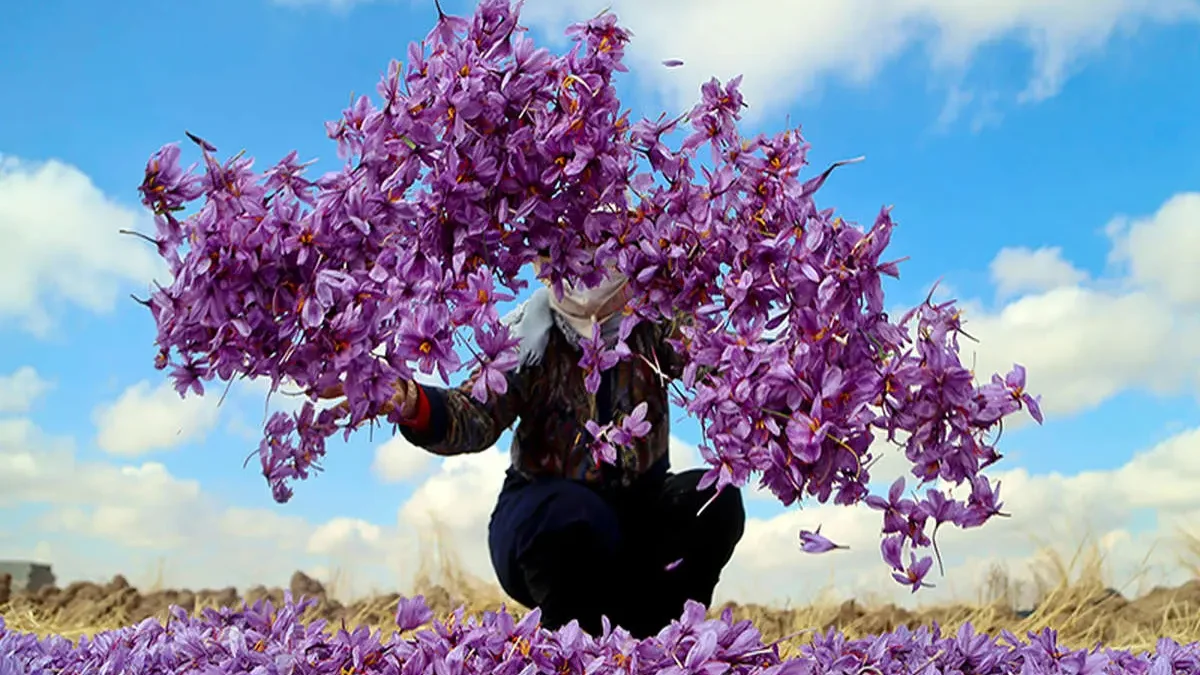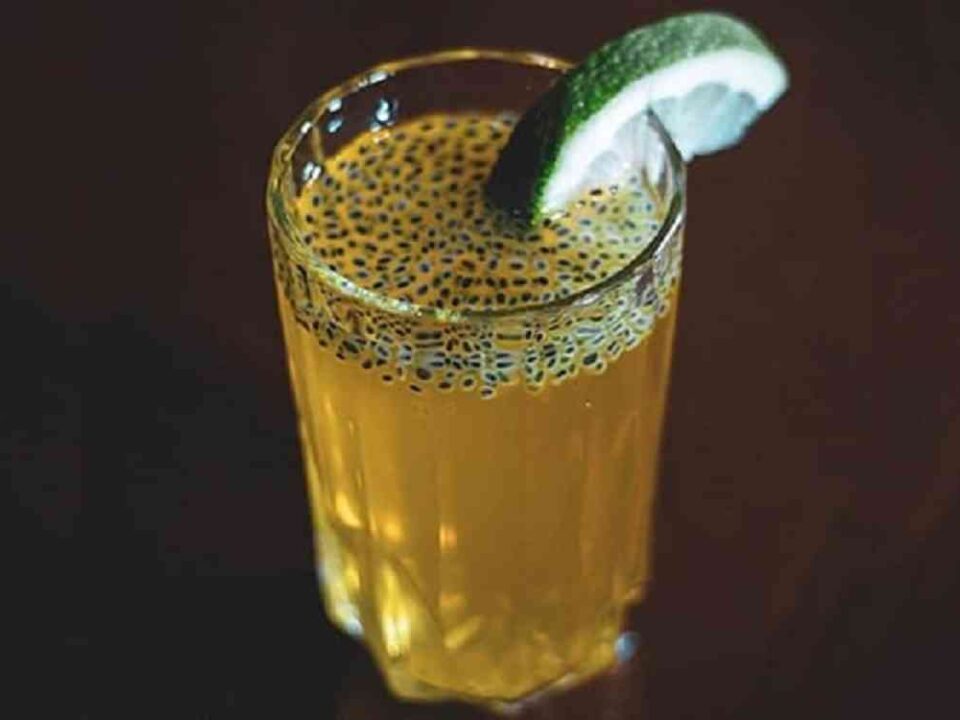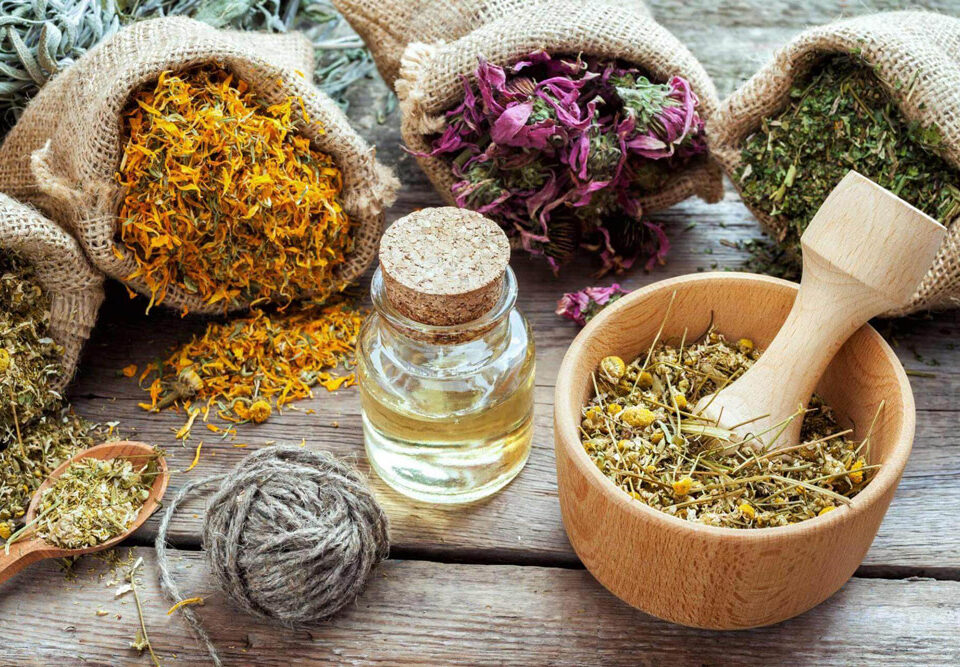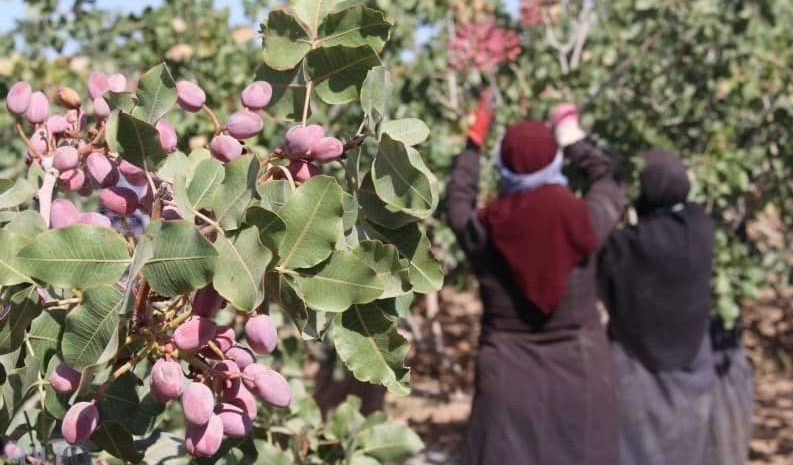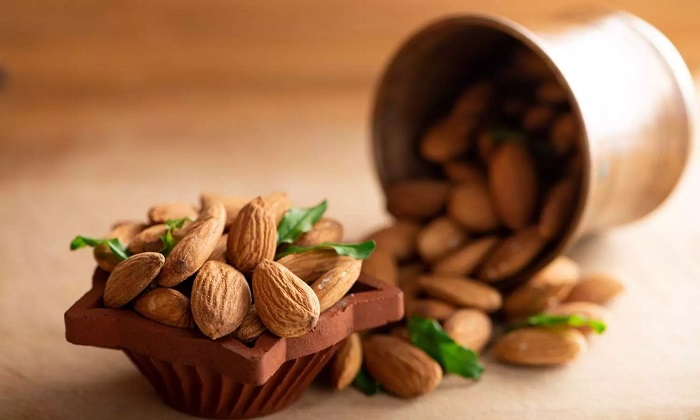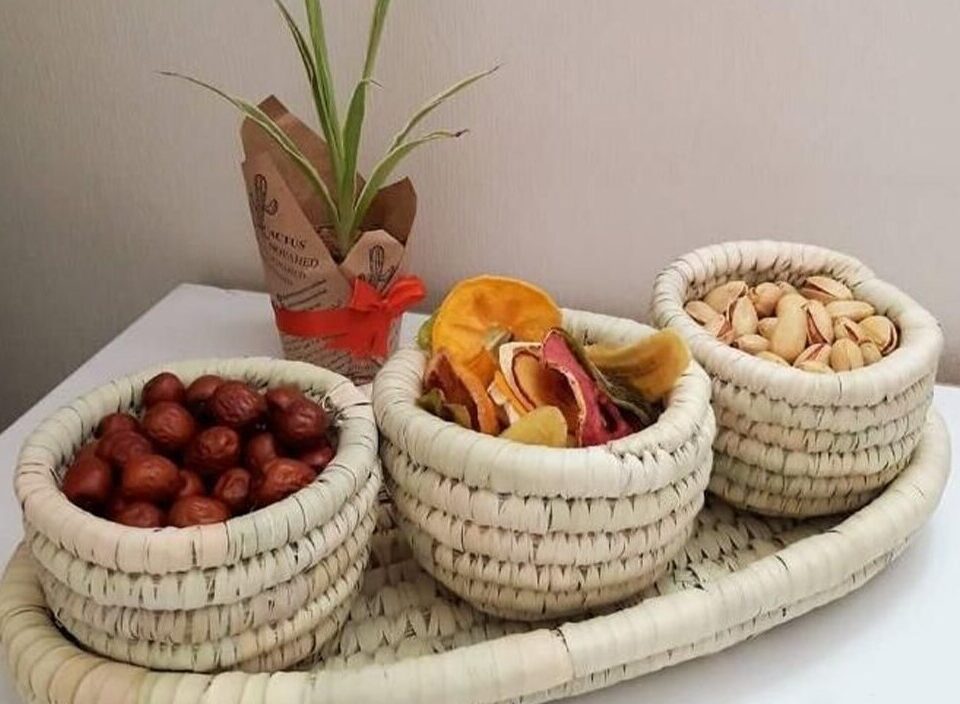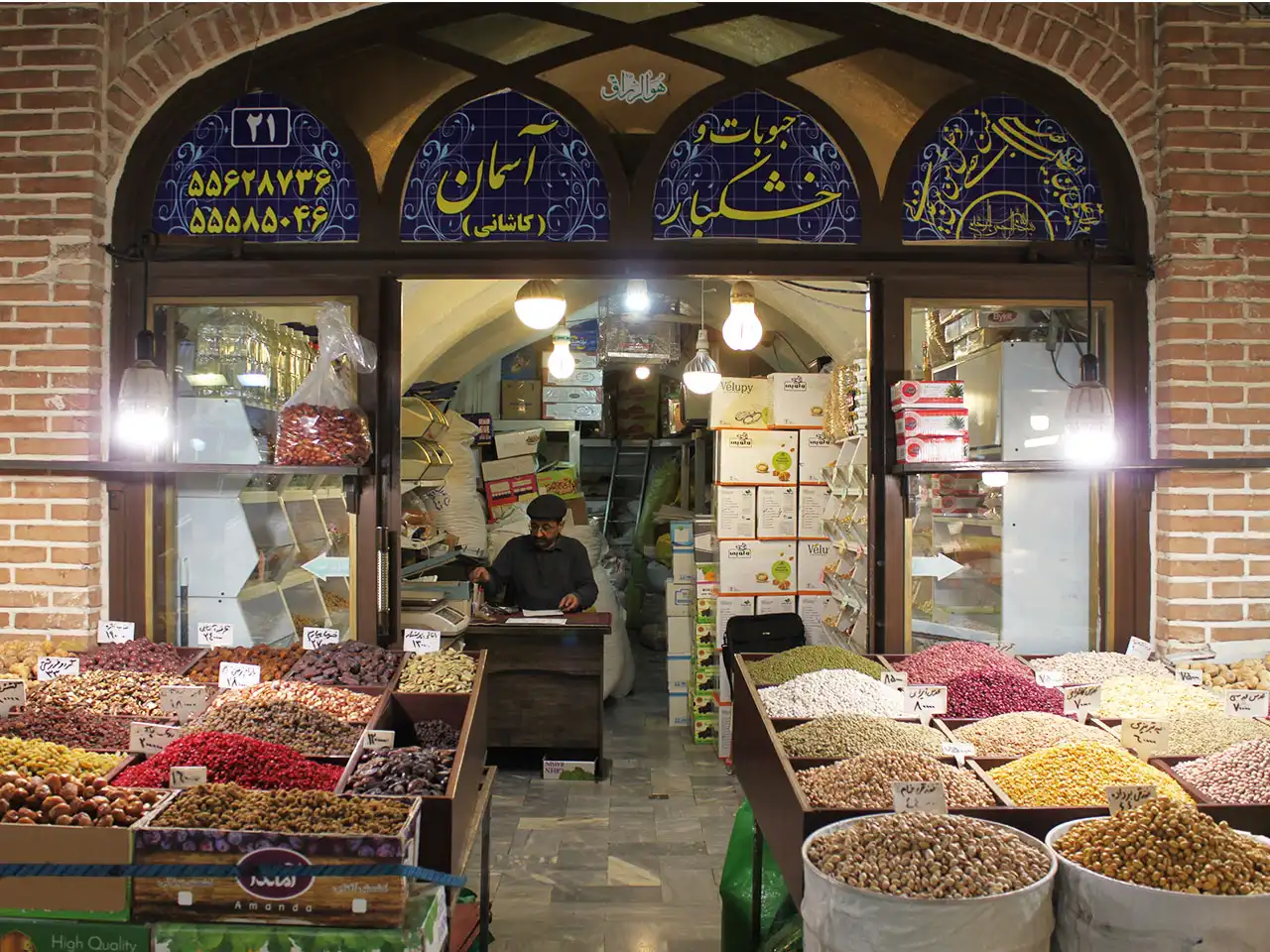
Iran’s Famous Nut Markets
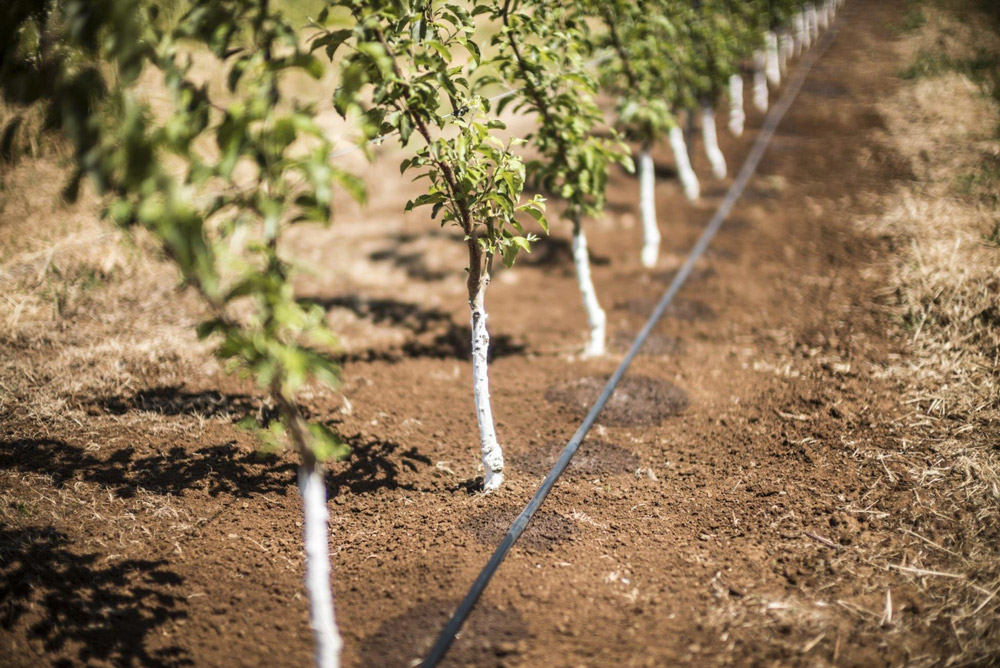
Sustainable Farming Practices for Nuts and Dried Fruits in Iran
The Journey from Farm to Table
Saffron, often referred to as “red gold,” is the world’s most expensive and prized spice, known for its distinctive flavor, aroma, and vibrant color. Iran is the largest producer of saffron, contributing over 90% of the world’s supply. The spice is derived from the stigmas of the Crocus sativus flower, and its cultivation is a labor-intensive process that involves careful attention from planting to harvesting. Iranian saffron is highly esteemed for its exceptional quality, making it a key ingredient in Persian cuisine and a sought-after product worldwide.
Here’s an in-depth look at the journey of Iranian saffron from farm to table, covering the growing, harvesting, and processing stages that result in this precious spice.
1. Ideal Growing Conditions for Saffron
Saffron is a crop that requires specific climatic conditions to thrive, and Iran’s unique geography provides the perfect environment for its cultivation. The regions of Khorasan—particularly Khorasan Razavi and South Khorasan—are the main centers of saffron production in Iran due to their favorable climate and soil.
Key Growing Conditions:
- Semi-Arid Climate: Saffron thrives in regions with hot, dry summers and cold winters, which help the bulbs grow and bloom properly.
- Well-Drained Soil: The soil in saffron-growing regions of Iran is typically sandy or loamy, ensuring that the Crocus sativus bulbs are not waterlogged, which is crucial for healthy growth.
- Altitude: Saffron grows best at altitudes of 1,000 to 2,000 meters, which are common in the Khorasan region. The cooler nights at higher elevations help enhance the flavor and potency of the saffron.
Planting Saffron:
- Saffron bulbs, or corms, are planted in late summer or early autumn (August to September). They are spaced carefully to ensure they receive adequate water and sunlight.
- The bulbs remain dormant until early autumn when the crocus flowers begin to bloom.
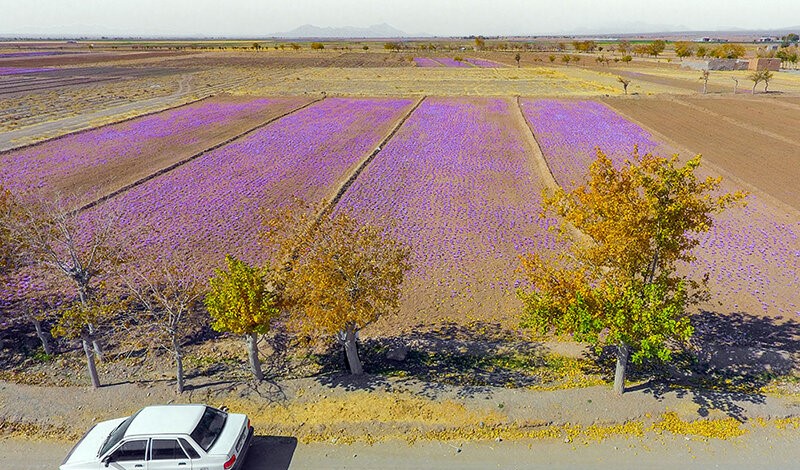
Khorasan Saffron
2. Harvesting the Saffron Crocus
The saffron harvest is one of the most delicate and labor-intensive stages in saffron production. Each flower contains just three red stigmas, which are the source of saffron, and they must be harvested by hand to ensure quality and precision.
When Is Saffron Harvested?
- Autumn Bloom: The saffron crocus blooms for only a short period, usually in October or November, when the climate is cool and dry. The flowers bloom early in the morning and must be harvested quickly to preserve their quality.
- Early Morning Harvest: The flowers are picked just before dawn to prevent the stigmas from being damaged by sunlight or moisture, which can affect their flavor and color.
Harvesting Process:
- Hand-Picking: The flowers are carefully hand-picked by farmers, one by one, to avoid damaging the delicate petals and stigmas. This labor-intensive process is typically carried out by skilled workers, often involving entire families during the harvest season.
- Stigma Separation: Once harvested, the flowers are taken to a processing area where the red stigmas (the saffron threads) are meticulously separated from the rest of the flower by hand. This stage requires precision to ensure only the highest quality stigmas are selected.
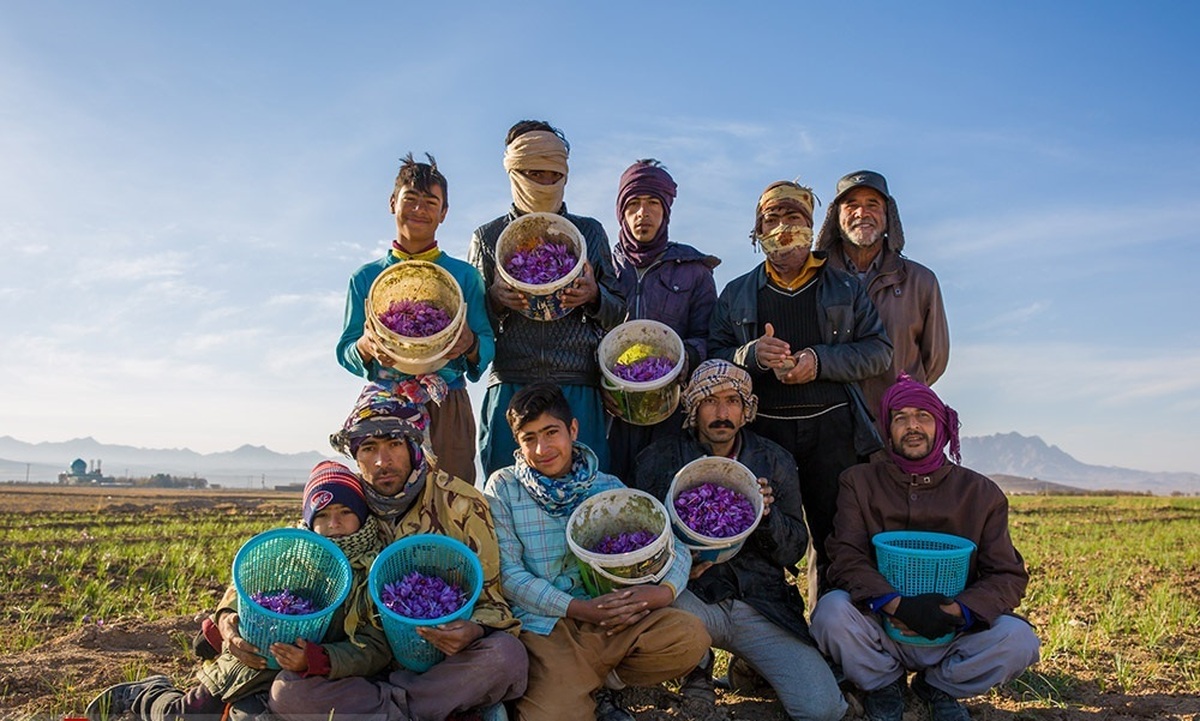
Persian Saffron in Torbat-e Heydarieh
3. Drying the Saffron Threads
After the stigmas are carefully separated from the flowers, they must be dried to concentrate their flavor, aroma, and color. The drying process is critical in determining the final quality of the saffron, as improper drying can result in loss of potency.
Drying Techniques:
- Traditional Sun-Drying: In some regions, saffron is dried in the sun, with the threads spread out in thin layers. This method requires constant monitoring to ensure the saffron doesn’t overheat or dry too quickly.
- Controlled Drying: More modern methods involve drying the saffron in controlled environments with low heat, typically between 30°C and 35°C (86°F to 95°F). This helps retain the saffron’s high levels of crocin (responsible for its color), picrocrocin (responsible for its flavor), and safranal (responsible for its aroma).
- Grading by Quality: After drying, saffron is often graded by quality based on its color, length of the threads, and the amount of yellow style present (the style is part of the stigma below the red thread).
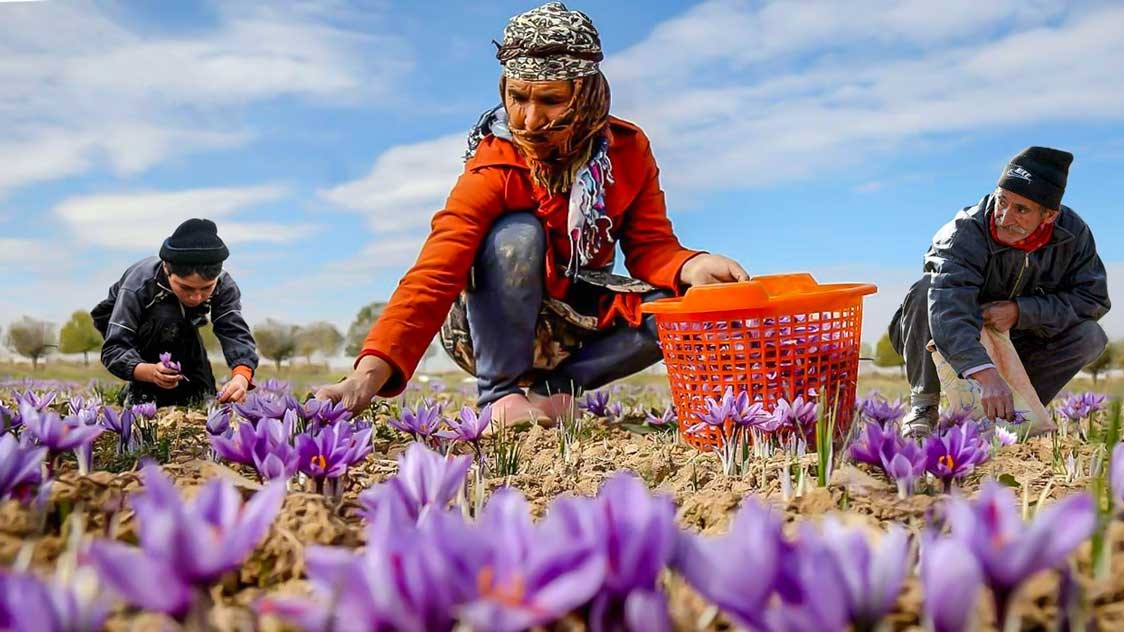
Persian Saffron
4. Saffron Grading and Quality Control
Iranian saffron is graded into various categories depending on its color, flavor, and purity. The highest quality saffron has long, deep red threads with minimal yellow parts, while lower grades may contain more of the yellow style.
Saffron Grades:
- Sargol: This is the highest grade of saffron, consisting of pure red stigmas with no yellow or white parts. It has the highest concentration of crocin, giving it a rich color and strong flavor.
- Pushal: This grade contains both red stigmas and a small portion of the yellow style. It is slightly lower in quality but still considered high-grade saffron.
- Bunch: This is the whole saffron thread, including the red stigma and the yellow style. It is less potent than Sargol but still widely used in cooking.
Quality Control:
- Iranian saffron is subject to rigorous quality control checks to ensure that it meets international standards. This includes testing for crocin levels, moisture content, and the absence of adulterants.
- Saffron is often sold in air-tight containers to prevent exposure to light and air, which can degrade its quality over time.
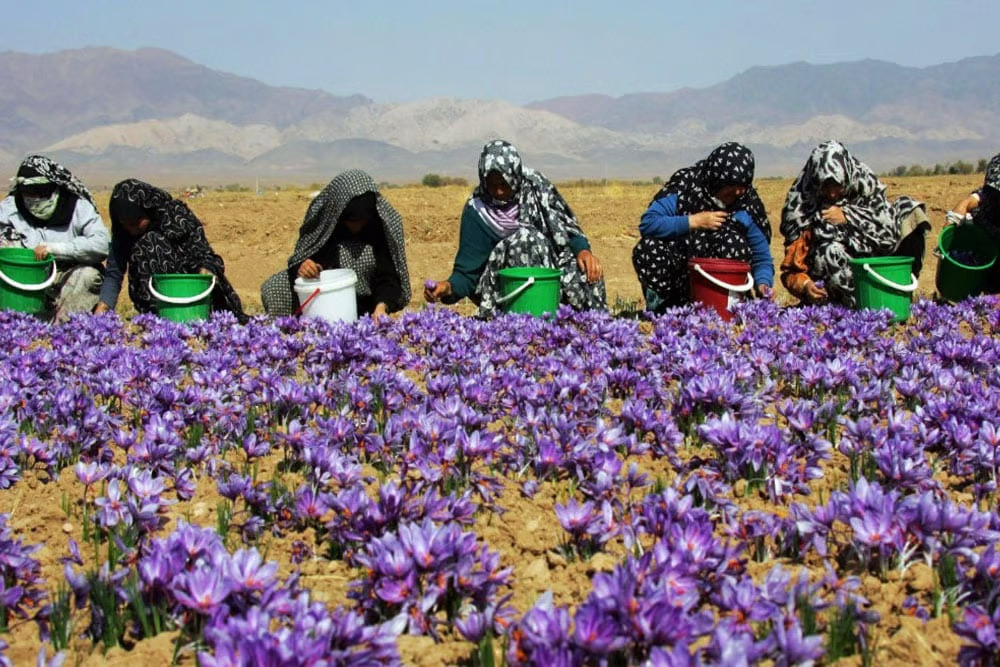
Persian Saffron
5. Saffron’s Journey to Markets
Once the saffron threads are harvested, dried, and graded, they are carefully packaged and distributed to markets around the world. Iran’s saffron is exported to countries across Europe, Asia, and the Middle East, where it is used in both culinary and medicinal applications.
Local and International Markets:
- Domestic Markets: In Iran, saffron is sold in traditional bazaars and supermarkets, where it is available in various grades and packaging sizes. The Khorasan region and cities like Mashhad are famous for their saffron markets.
- Export: Iranian saffron is exported to many countries, with Spain, India, and the UAE being key markets. Due to its high quality, Iranian saffron commands premium prices in international markets.
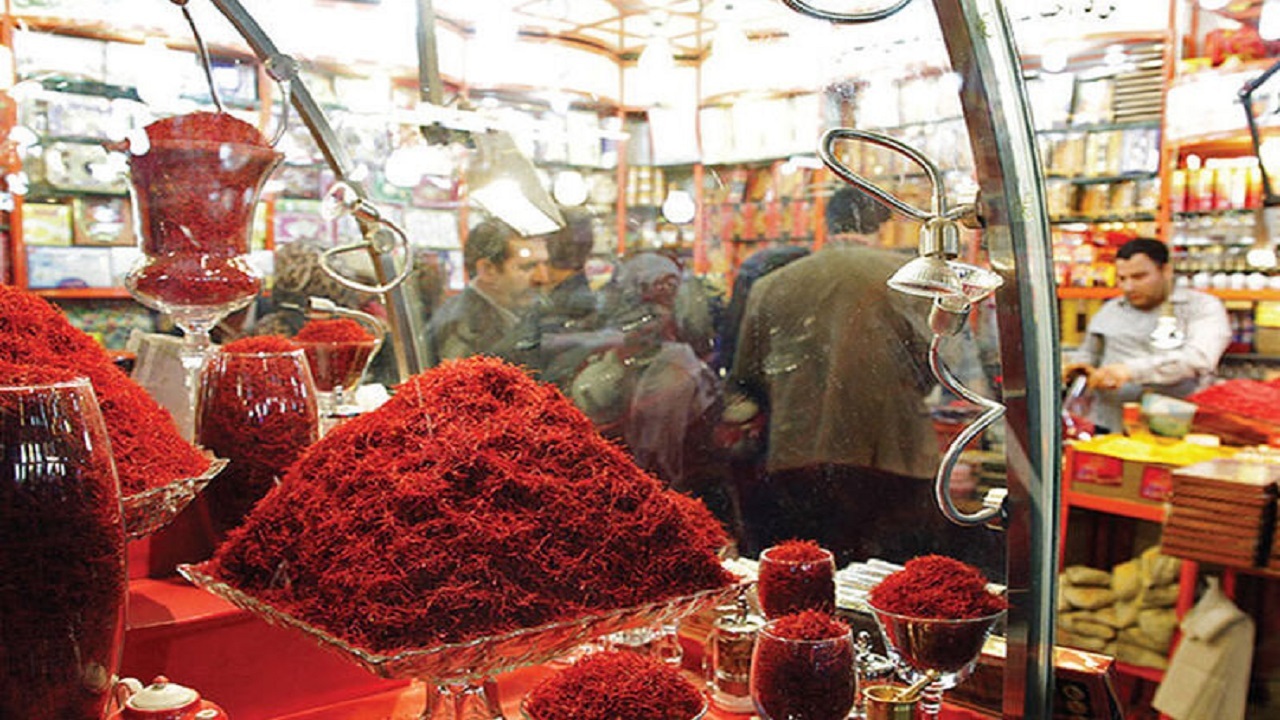
Mashhad saffron market
6. Using Saffron in Cooking
Saffron is a central ingredient in Persian cuisine, where it is used to add flavor, color, and aroma to a wide range of dishes. From rice dishes to desserts, saffron’s delicate floral notes and vibrant golden hue elevate even the simplest recipes.
Popular Dishes Using Saffron:
- Chelo (Persian Rice): Saffron is often dissolved in hot water and then poured over cooked rice to give it a golden color and rich aroma. It is a staple in Persian feasts.
- Tahchin: A Persian rice cake made with saffron, yogurt, and chicken or lamb, creating a crispy golden crust with a flavorful interior.
- Sholeh Zard: A saffron-infused rice pudding flavored with rosewater, almonds, and cinnamon.
- Saffron Tea: A fragrant tea made by steeping saffron threads in hot water, often combined with cardamom and honey.
Cooking Tips:
- Blooming Saffron: To extract the full flavor and color of saffron, it’s essential to bloom it before using. This involves crushing the threads and dissolving them in warm water or milk for about 10 minutes before adding them to your dish.
- Storage: To preserve its potency, saffron should be stored in an airtight container away from light, heat, and moisture.
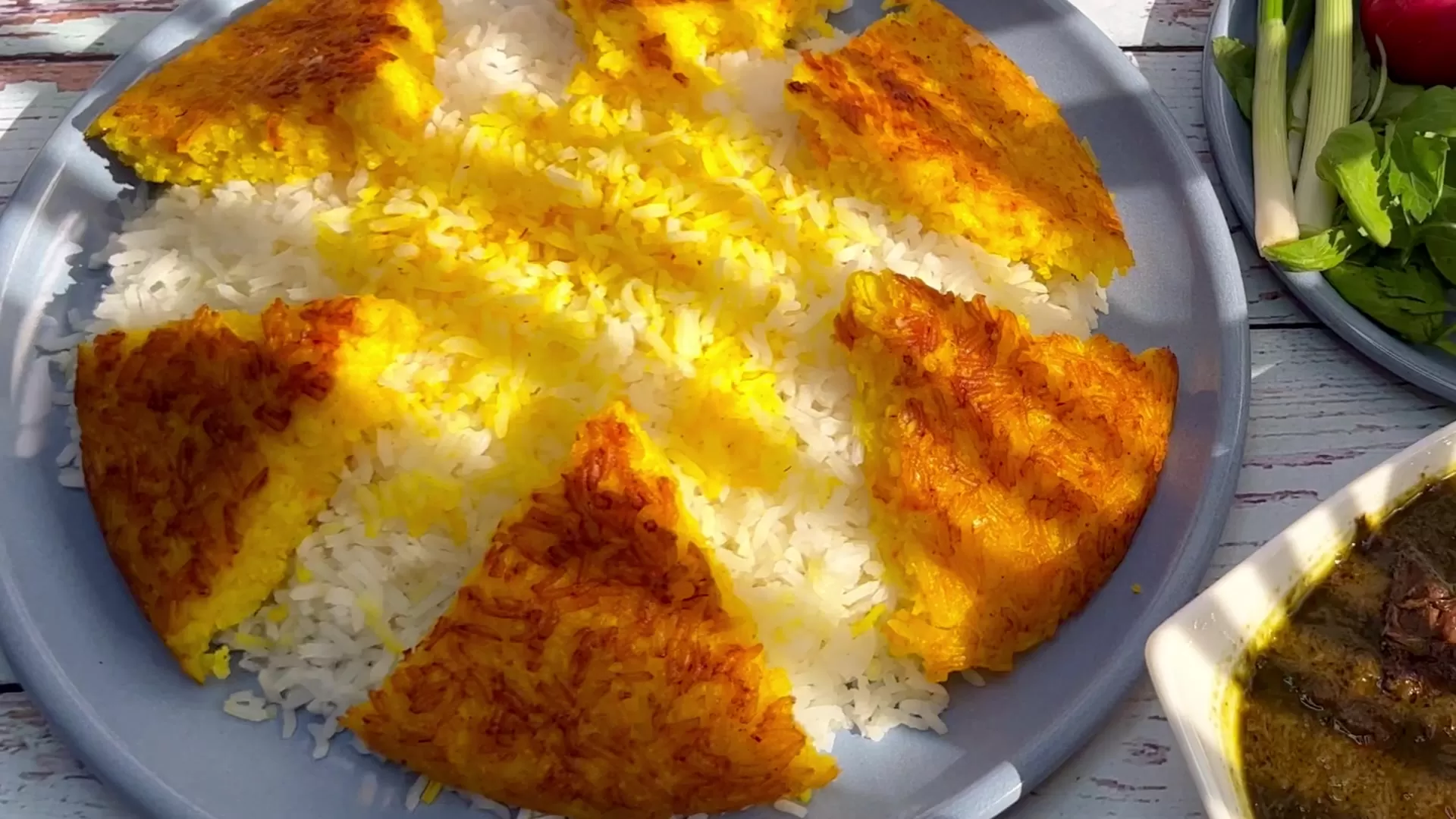
Saffron Rice (Chelo)
Conclusion
The journey of Iranian saffron from farm to table is a meticulous and labor-intensive process that results in one of the world’s most treasured spices. From the careful cultivation of Crocus sativus bulbs to the hand-picking of flowers and the delicate drying of the saffron threads, each step in saffron production requires skill and precision. The result is a spice that is not only valuable for its flavor and color but also for the centuries of tradition and craftsmanship it represents. Whether you’re exploring Persian markets or enjoying a home-cooked dish, saffron’s rich history and exceptional quality make it a truly remarkable ingredient.

